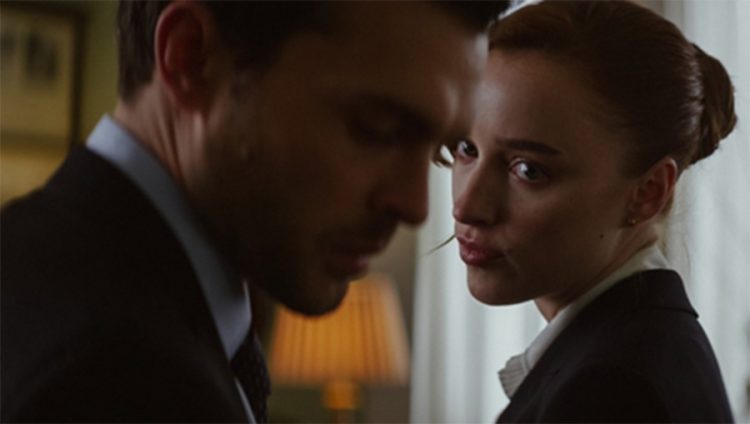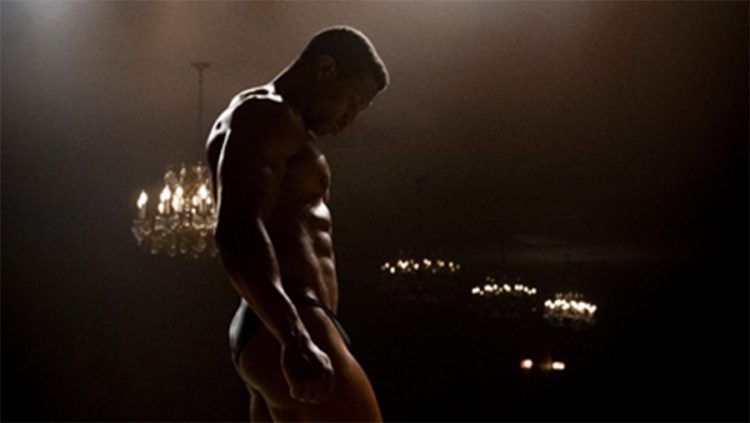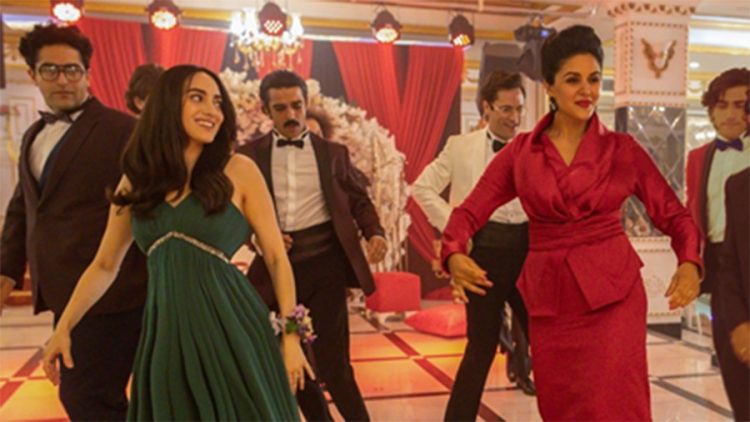 Three of the films in the US Dramatic Competition at the 2023 Sundance Film Festival find writers directing their own scripts engaging with socially urgent issues that feel destined to be conversation starters.
Three of the films in the US Dramatic Competition at the 2023 Sundance Film Festival find writers directing their own scripts engaging with socially urgent issues that feel destined to be conversation starters.
TV-director Chloe Domont makes her feature film debut with “Fair Play”, an (alleged) erotic thriller that tracks the issues a young couple face when their professional lives crash into their domestic relationship, excavating social problems of gender and power dynamics. Elijah Bynum’s “Magazine Dreams” is excavating different social issues (masculinity, fan-culture, loneliness, race) where an amateur bodybuilder finds himself unravelling in his isolation. Maryam Keshavarz’s “The Persian Version” centres on an Iranian-American family as they weather the dynamics of love, loss, family, and culture shifts. Each of the three films has a thematic focus that feels important, if only the actual filmmaking could be as potent.
Domont’s was one of the first films at Sundance to get picked up by a major studio. The two-person drama, billed as an erotic thriller, was acquired for a whopping $20 million by Netflix. And it is very likely that this acquisition means “Fair Play” seems destined to be a conversation starter for the rest of 2023, as Netflix continues its bid to be the flashiest of distributors of contemporary film. In “Fair Play”, a newly engaged couple (Alden Ehrenreich and Phoebe Dynevor) find their secret relationship unravelling when one of them is promoted at their cutthroat hedge fund firm. We first meet Luke and Emily at the wedding of one of Luke’s siblings, with a gloriously heady needle-drop of Donna Summer’s “Love to Love You Baby” bleeding into the sound design. The opening is, perhaps, the most confident sequence in “Fair Play” – hazily ambient and accelerating the wantonness of the young couple’s wild abandon. It’s a looseness that the rest of the film, effortful and inorganic, cannot hold to. Domont, also the screenwriter, seems to be setting up decisively personal stakes before the professional world interrupts. Although the couple live together, their relationship is a secret from their colleagues. When one of their superiors has a meltdown in their office, a promotion is up for grabs and with that promotion the gender politics of the 21st century become the centre of “Fair Play”.

Domont’s was one of the first films at Sundance to get picked up by a major studio. The two-person drama, billed as an erotic thriller, was acquired for a whopping $20 million by Netflix. And it is very likely that this acquisition means “Fair Play” seems destined to be a conversation starter for the rest of 2023, as Netflix continues its bid to be the flashiest of distributors of contemporary film. In “Fair Play”, a newly engaged couple (Alden Ehrenreich and Phoebe Dynevor) find their secret relationship unravelling when one of them is promoted at their cutthroat hedge fund firm. We first meet Luke and Emily at the wedding of one of Luke’s siblings, with a gloriously heady needle-drop of Donna Summer’s “Love to Love You Baby” bleeding into the sound design. The opening is, perhaps, the most confident sequence in “Fair Play” – hazily ambient and accelerating the wantonness of the young couple’s wild abandon. It’s a looseness that the rest of the film, effortful and inorganic, cannot hold to. Domont, also the screenwriter, seems to be setting up decisively personal stakes before the professional world interrupts. Although the couple live together, their relationship is a secret from their colleagues. When one of their superiors has a meltdown in their office, a promotion is up for grabs and with that promotion the gender politics of the 21st century become the centre of “Fair Play”.
The ambition is all well and good, and I can imagine the Netflix bosses recognising the timeliness of this story: what happens when a woman must grapple in a male-oriented world? What happens when the sexual politics of the workplace come home to roost? These are not unimportant questions, but they are also not new questions. The dynamics of women in the workplace, or men grappling with women in superior positions, have been the crux of writing and media for decades. What does “Fair Play” add to that discussion? Very little. In “Fair Play” Domont takes a familiar concept and drags it to the most obvious places, minute by tedious minute. “Fair Play” is billed as an erotic thriller, and it’s hard to discern why. It strains credulity, but also feels sad, that in our thirst for coherent adult dramas that mix real-world dynamics with sexual interplay that we are calling something as detached as the interpersonal mechanics of “Fair Play” an erotic thriller. Domont is a confident director, but “Fair Play” navigates no sense of the erotic. Its opening sex scene is, at least, playfully deployed but later encounters with sex especially a sexual act that the final plot hinges on, feel unpersuasive and empty. It is one thing that this “erotic thriller” has little sense of the erotic, but even more startling that very little in “Fair Play” develops with any notion or sense of the thrilling. The plot overwhelms, so that Ehrenreich is left to play threads of a character that never cohere. Dynevor makes a solid attempt at imbuing the opacity of Emily with some context, but “Fair Play” offers her no real point-of-view.
Too much of “Fair Play” ends up coming across as something AI generated, made up of all the hot-button issues to provoke discussion but with little finesse to modulate it. It attempts to be a provocation but is, instead, a mostly graceless and unrevealing look into concepts that feel stale. Obviousness is not an inherent crutch in a film, but it feels concerning that so much of “Fair Play” deploys the most expected outcomes in the least clever ways. It is as if we are so starved for films that reckon with actual issues that “Fair Play” and its willingness to intone on noteworthy issues is mistaken for intelligence.
“Magazine Dreams”

Obviousness is also a recurring issue in “Magazine Dreams”. Jonathan Majors’ performance as Killian Maddox, an amateur bodybuilder, is likely to stay in conversation for much of 2023. It’s the kind of bold and physically transformative performance, full of bombast and verve, that earns plaudits. It’s the kind of performance from an up-and-coming performer that’s big and overt that feels like an important part of his trajectory. I like Majors, but I am unconvinced of the performance within the context of his career and within the context of the film itself. It is ambitious and tries its best to hold together the increasingly frustratingly synthetic “Magazine Dreams”. It is a glib, prosaic, mostly unpleasant, and overly self-conscious film which takes a slew of hot-button issues and turns them into an ambivalent sludge.
Majors is on screen for almost each of the 124 minutes of “Magazine Dreams. And, one might argue that the unpleasantness that overwhelms every fibre of Bynum’s work is intentional. Killian is an antisocial loner. His closest companion is his ailing grandfather who Killian is caretaker for. He has had enough run-ins with issues that he has routine meetings with a counsellor who tries, and fails, to pierce the bombast of Killian’s fake bravura. He has one single goal in life – the “magazine dream” of the title. He wants to be on the cover of a bodybuilding magazine. He performs his monotonous job at a grocery store, flirts disastrously with his coworker, trains relentlessly and writes increasingly obsessive letters to Brad Vanderhorn – a successful bodybuilder. Every potent aspect of “Magazine Dreams” is telegraphed within the first few minutes – Killian has a short fuse, Killian is single-minded, Killian is lonely, Killian has a fraught relationship with women. But do any of these observations make for a film with anything meaningful?
Perhaps “Magazine Dreams”, in its monotony and increasingly repetitive sequences, is imitating its protagonist, but it’s still shallow and empty and tedious and with no commitment to a single one of its plot-points. Killian Maddox, 6”1 and 245 pounds and full of dashed hopes, could be someone we care about – a sad and lonely bulky Black man in a racially fraught country grappling with being a weirdo. But, neither Bynum nor a (very) uneven Majors do anything with fleshing this out. So much that although “Magazine Dreams” has its designs on being a character study, it is unrevealing and graceless at most moments. We keep waiting for things to go wrong, we know they will. A date with his co-worker goes badly, two different interactions with groups of white men recognise the racial dynamics of his world, a less effective scene with a Black prostitute (Taylour Paige trying hard in a nothing role) reveals a hint of weirdness about black women that feels uneasy. By the time Killian has a meeting with someone that seems to go well, the sleight-of-hand that injects a strangely opaque perspective of masculinity and sexuality feels tiresome. “Magazine Dreams” left me caught between bafflement and consternation. Shallow on race. Shallow on sexuality. Shallow on masculinity. Abysmal on mental health. On the sidelines, Harriet Sansom Harris gives a committed performance as Killian’s counsellor, but “Magazine Dreams” has little beyond its ambivalent shallowness.
“The Persian Version”

“The Persian Version” is, depending on how you look at it, an examination of displacement in its Iranian-American cast, a late-in-life, coming-of-age story about a lesbian filmmaker, a story about the generation gap between mother and daughter or an odd romantic comedy about a queer woman who ends up having a baby with a theatre performer. There are many things going on in Keshavarz’s feature film which is overflowing with earnestness and exuberance but oftentimes feels more exhausting and frenetic than thoughtful or sincere.
It feels strange to bristle at something that seems so well intentioned, but there’s a chaos abounding in “The Persian Version” that’s hard to thread. We first meet Leila (Layla Mohammadi) at a Halloween competition with the winning costume of a burkini, surfboard in hand. At first, this seems like Leila’s story. Recently divorced from her wife, she is a budding filmmaker ruminating on the chaos of her life with an ailing father, a very intense mother and eight brothers. There’s an immediately interesting story there. Shireen, her mother, is clearly uncomfortable with Leila’s sexuality, and Leila is deliberately antagonistic to her mother she does not understand. But the set-up, so rich and interesting, becomes increasingly incoherent and slapdash as “The Persian Version” half-heartedly attempts socio-political observations, meta-textual commentary, romantic comedy conceits and melodrama.
Too much of this is teeming with a self-awareness that leads to many leaden moments of dramaturgy. Instead of showing us the dynamics of this world and family in ways that feel organic and controlled, “The Persian Version” opts for voice-overs, fourth-wall breaks and conversations that feel more tailored for the listening audience than the characters themselves. It is a tonally and visually incoherent film which leaves its aesthetic to shoulder themes that should feel important but only struggle under the weight of the scattershot ways they are deployed.
Many films in the American category at Sundance that seem to stem from a potent interest in something thoughtful and important nonetheless, end up feeling haphazard as these concepts appear more like notches on a goalpost. Late in the film we go to Iran for a long stretch that feels incongruous with the tone of the actual film, and ends up being strangely colourless in attempting to illuminate any real dynamics of the characters. I suppose it is radical in a way to make a tribute to one’s culture where each new character is more insufferable than
the last. It is odd how “The Persian Version” feels so reticent to really engage with the complicated ideas it nods to. It flirts with some themes that could be or should be exacting and affecting and then buries them in just the most tedious constructions and writing. What could be a full-throated celebration of culture ends up feeling more ponderous than joyous.





